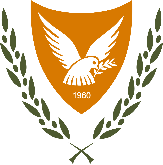Images of woman and child from the Bronze Age : reconsidering fertility, maternity, and gender in the ancient world / Stephanie Lynn Budin..
Τύπος υλικού: ΚείμενοΛεπτομέρειες δημοσίευσης: Cambridge: Cambridge University Press, 2011. Περιγραφή: x, 384 p. : ill. ; 26 cmISBN:
ΚείμενοΛεπτομέρειες δημοσίευσης: Cambridge: Cambridge University Press, 2011. Περιγραφή: x, 384 p. : ill. ; 26 cmISBN: - 9780521193047
Stephanie Lynn Budin teaches at Rutgers University, Camden. She is the author of The Myth of Sacred Prostitution in Antiquity (Cambridge, 2008) and numerous articles on ancient religion and iconography.
Includes bibliographical references and index.
Introduction - Kourotrophic iconography in the ancient near East and Mediterranean: origins and meanings -- Egypt -- The Levant and Anatolia -- Mesopotamia and Iran -- Cyprus -- The Aegean -- Conclusions.
"This book is a study of the woman-and-child motif as it appeared in the Bronze Age eastern Mediterranean, focusing on Egypt, the Levant, Anatolia, Mesopotamia, Iran, Cyprus, and the Aegean. Rather than being a universal symbol of maternity, or a depiction of a mother goddess, the woman-and-child motif, called by the technical name kourotrophos, was relatively rare in comparison with other images of women in antiquity, and served a number of different symbolic functions, ranging from honoring the king of Egypt to giving extra oomph to magical spells"-- This book is a study of the woman-and-child motif - known as the kourotrophos - as it appeared in the Bronze Age eastern Mediterranean. Stephanie Lynn Budin argues that, contrary to many current beliefs, the image was not a universal symbol of maternity or a depiction of a mother goddess. In most of the ancient world, kourotrophic iconography was relatively rare in comparison to other images of women and served a number of different symbolic functions, ranging from honoring the king of Egypt to adding strength to magical spells to depicting scenes of daily life. This work provides an in-depth examination of ancient kourotrophoi and engages with a variety of debates that they have spawned, including their role in the rise of patriarchy and what they say about ancient constructions of gender. Review: 'The book debunks several long-held and unsubstantiated beliefs in the literature, and reorients our thinking about images of women and children towards a context-specific approach.' Allison Thomason, Near Eastern Archaeology
Δεν υπάρχουν σχόλια για αυτό τον τίτλο.

